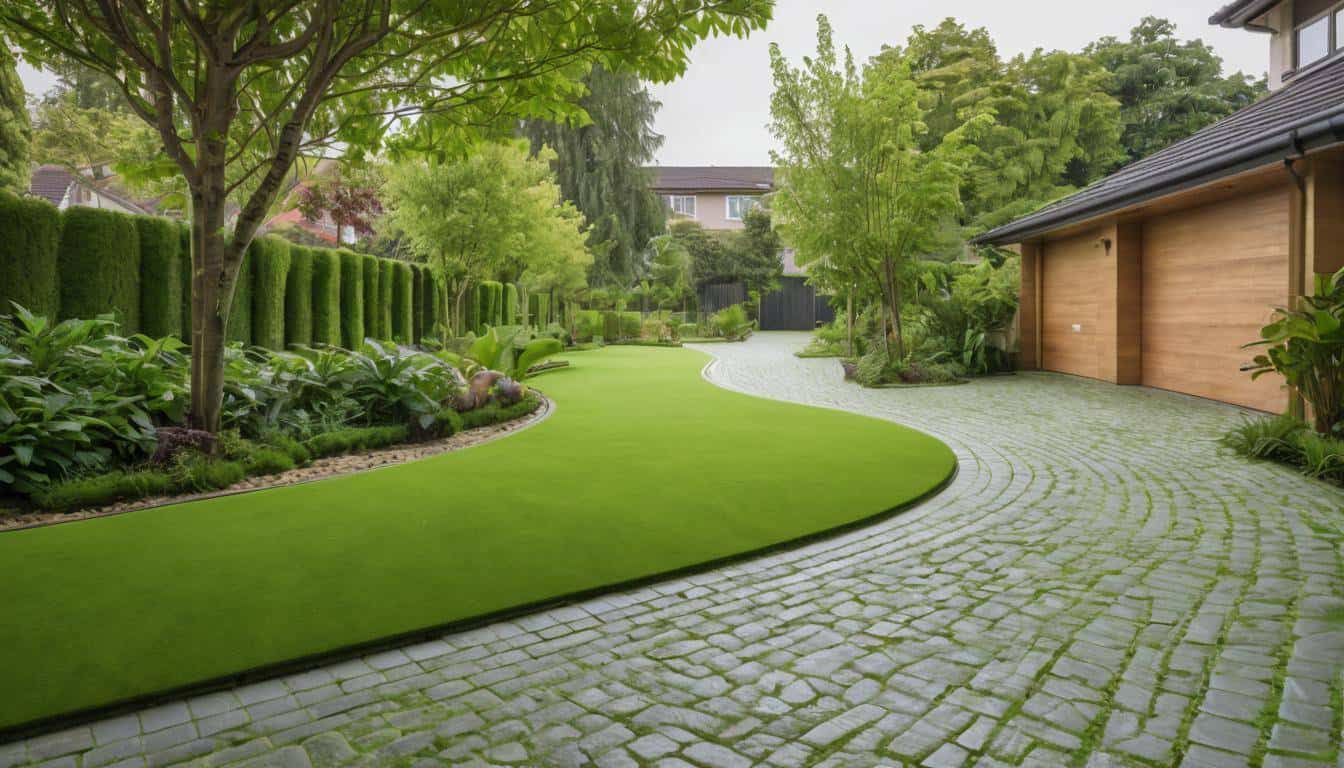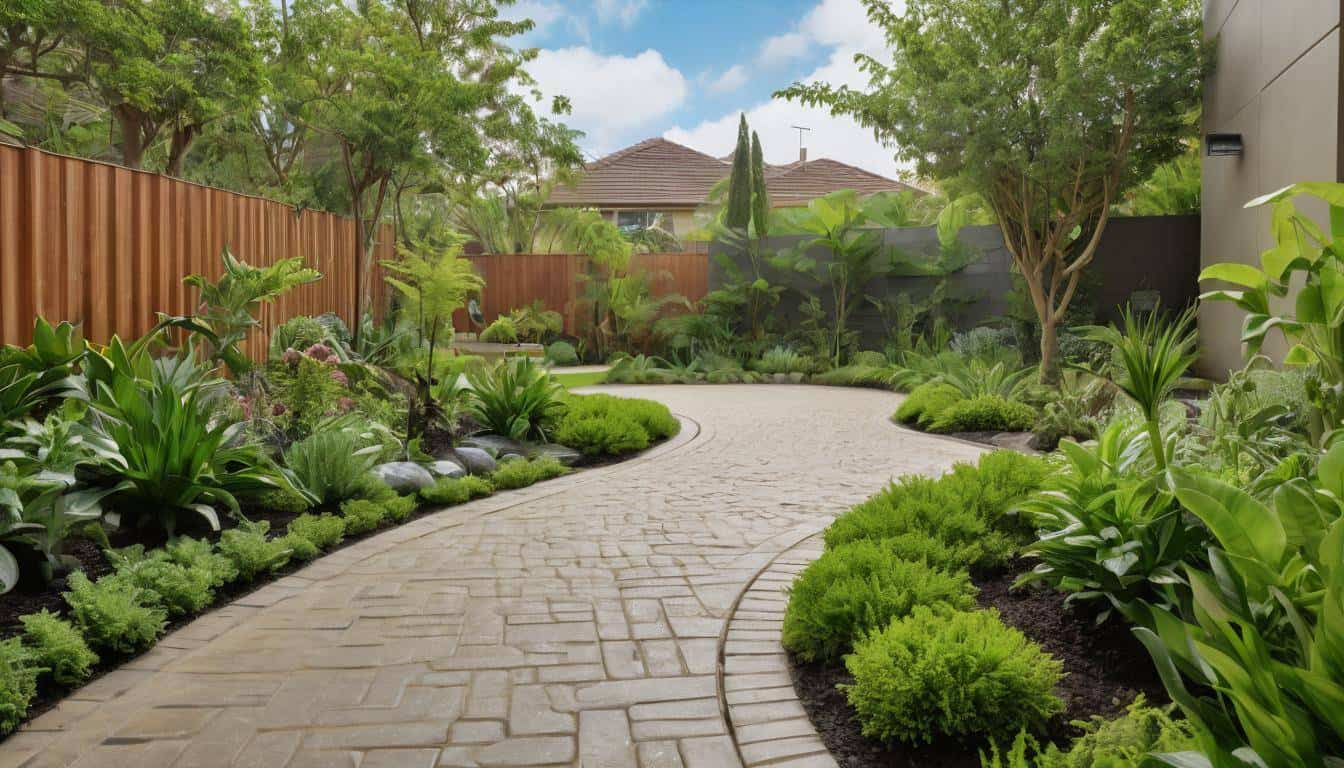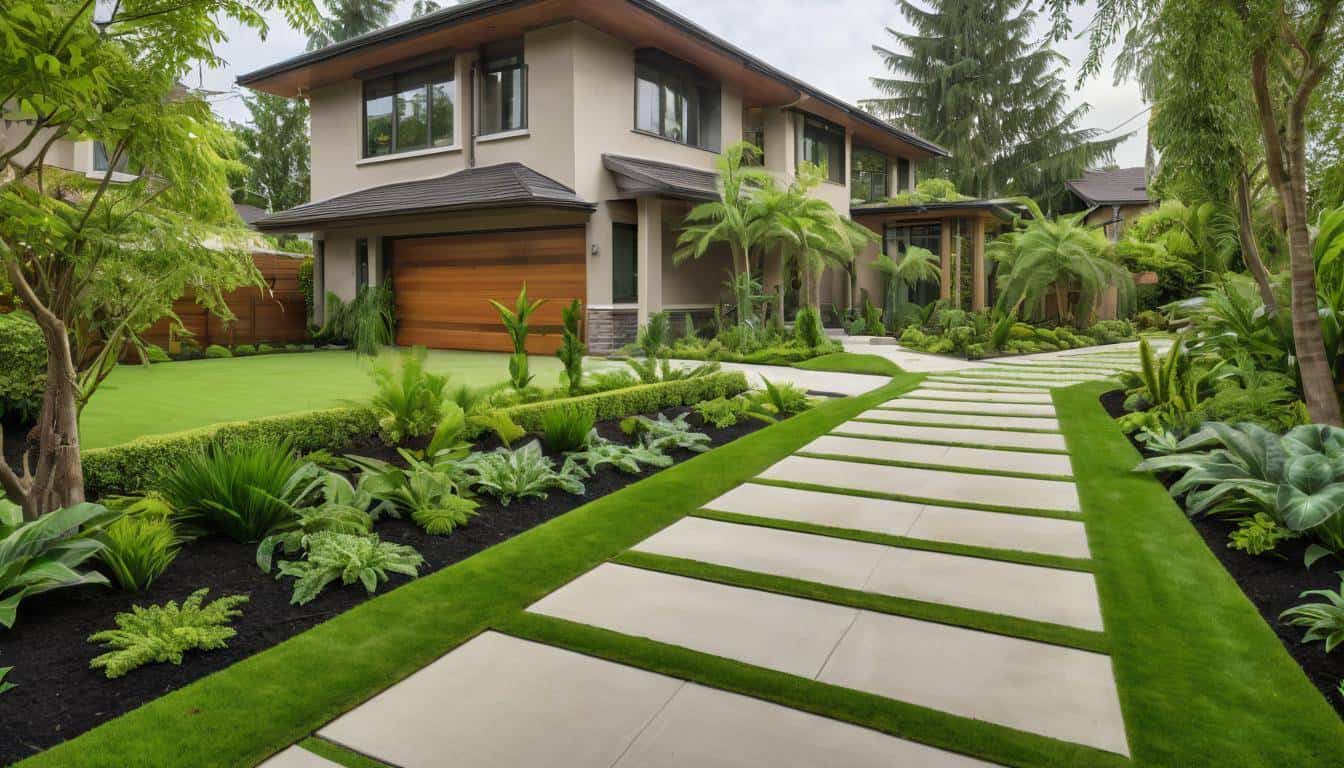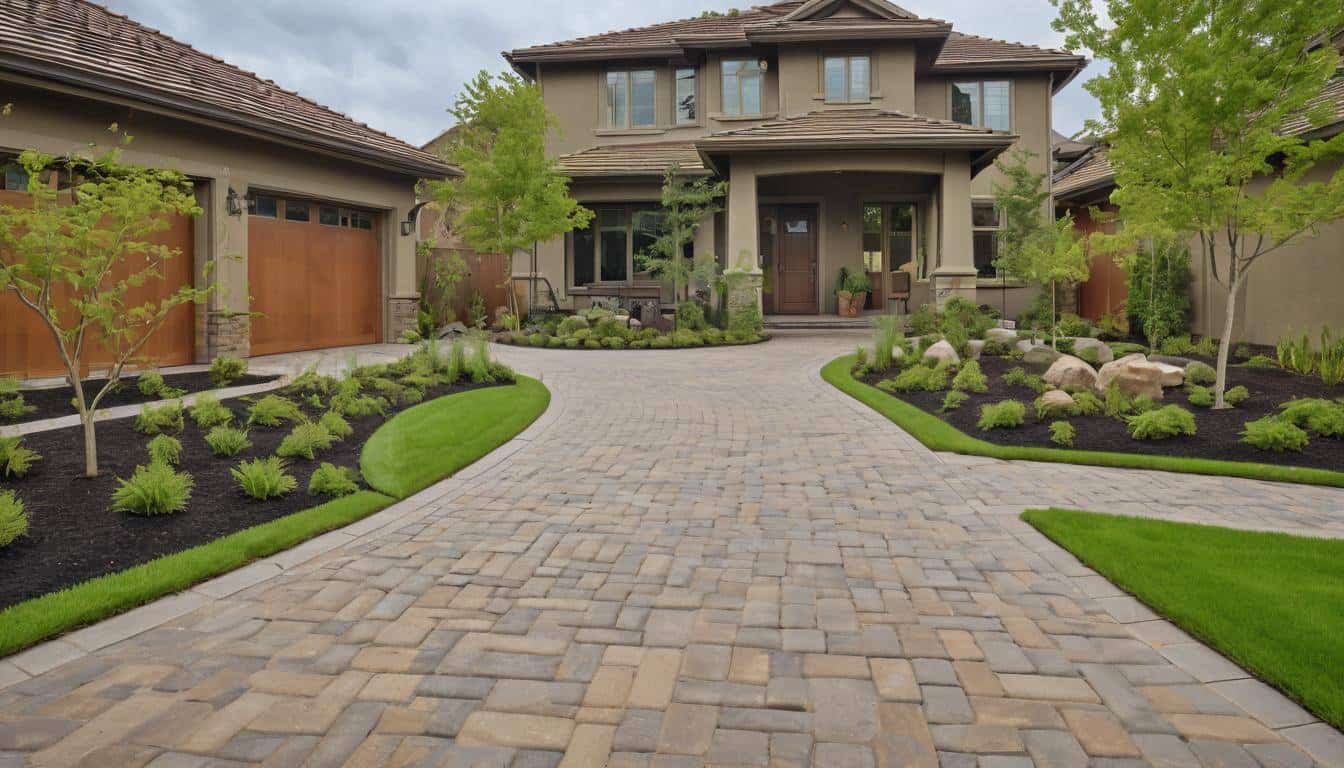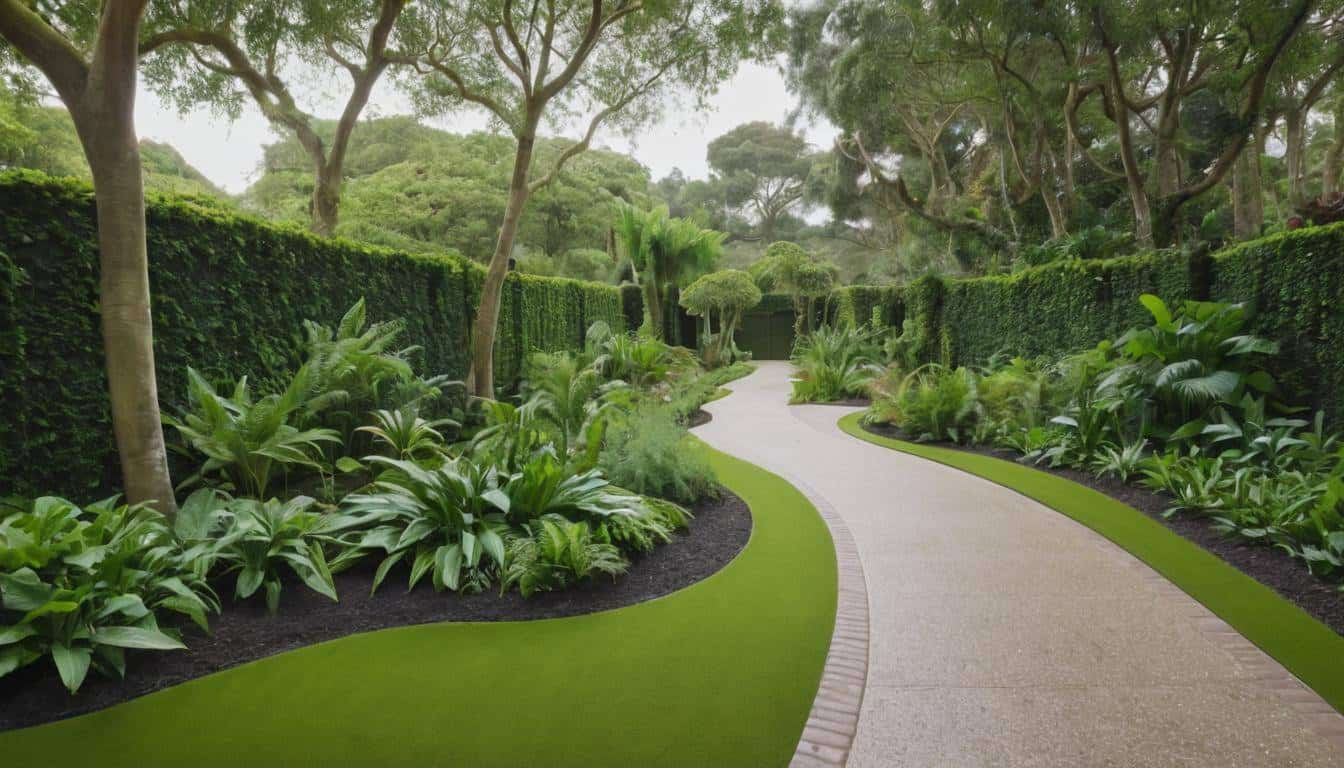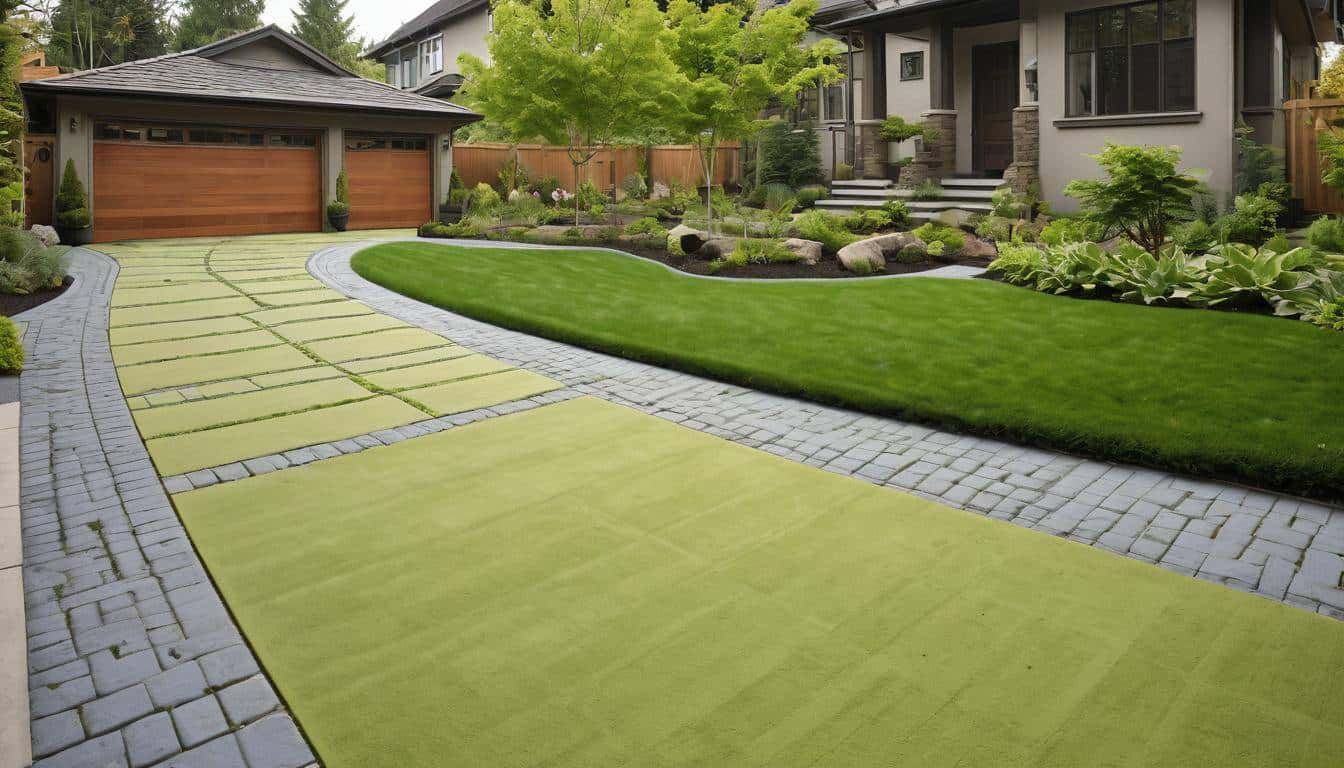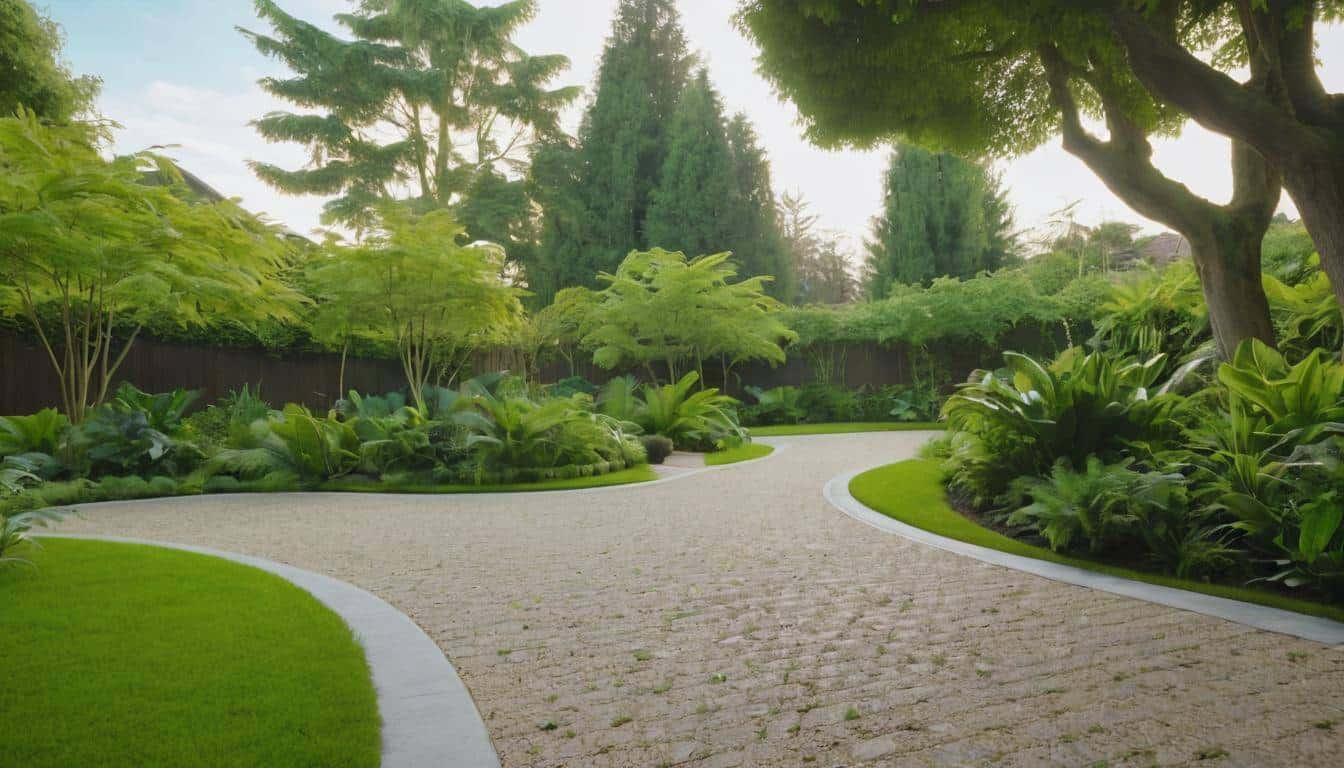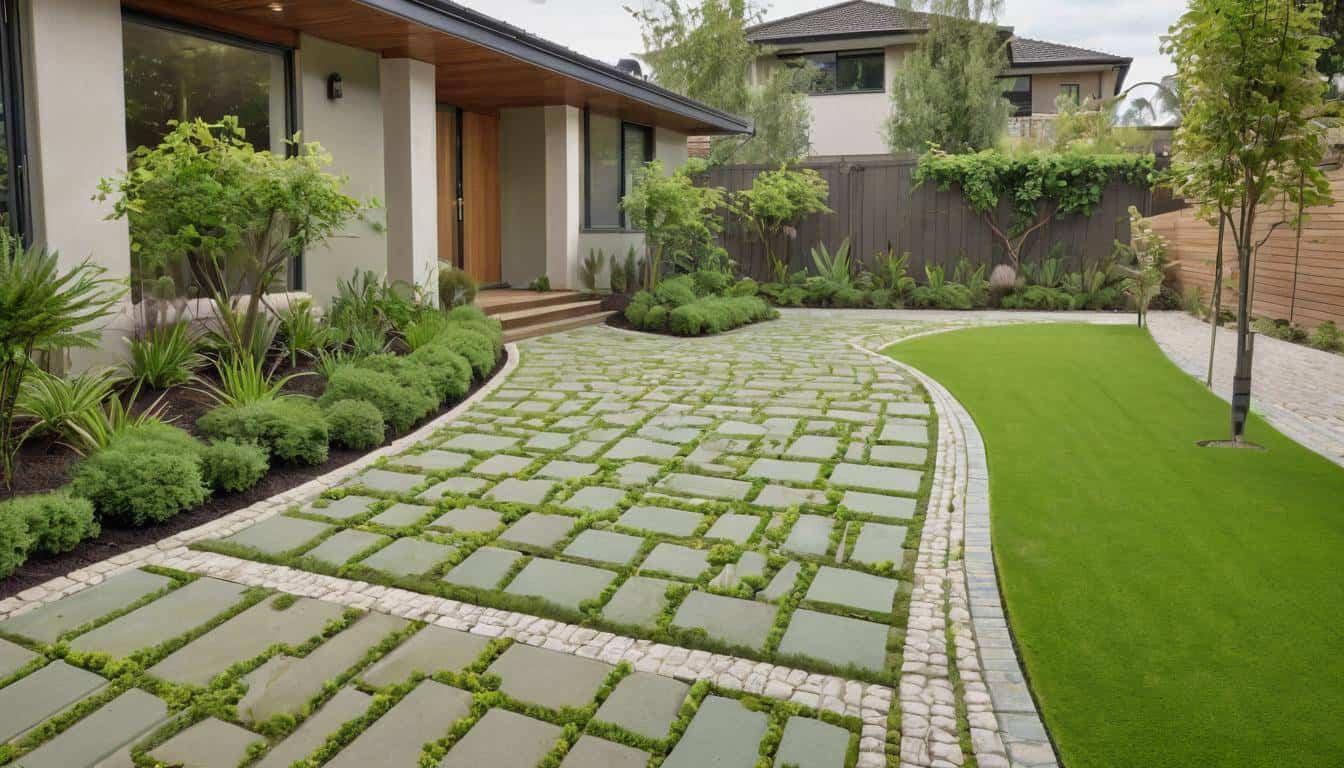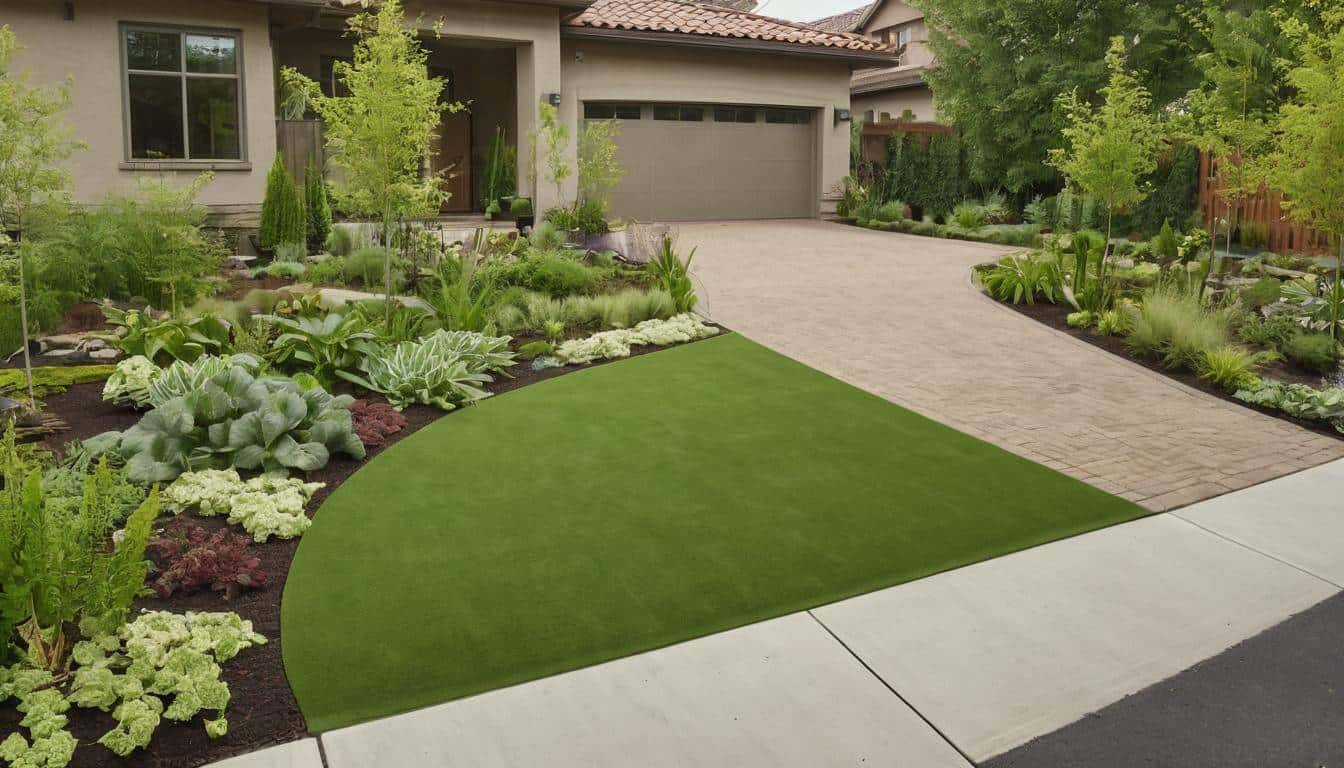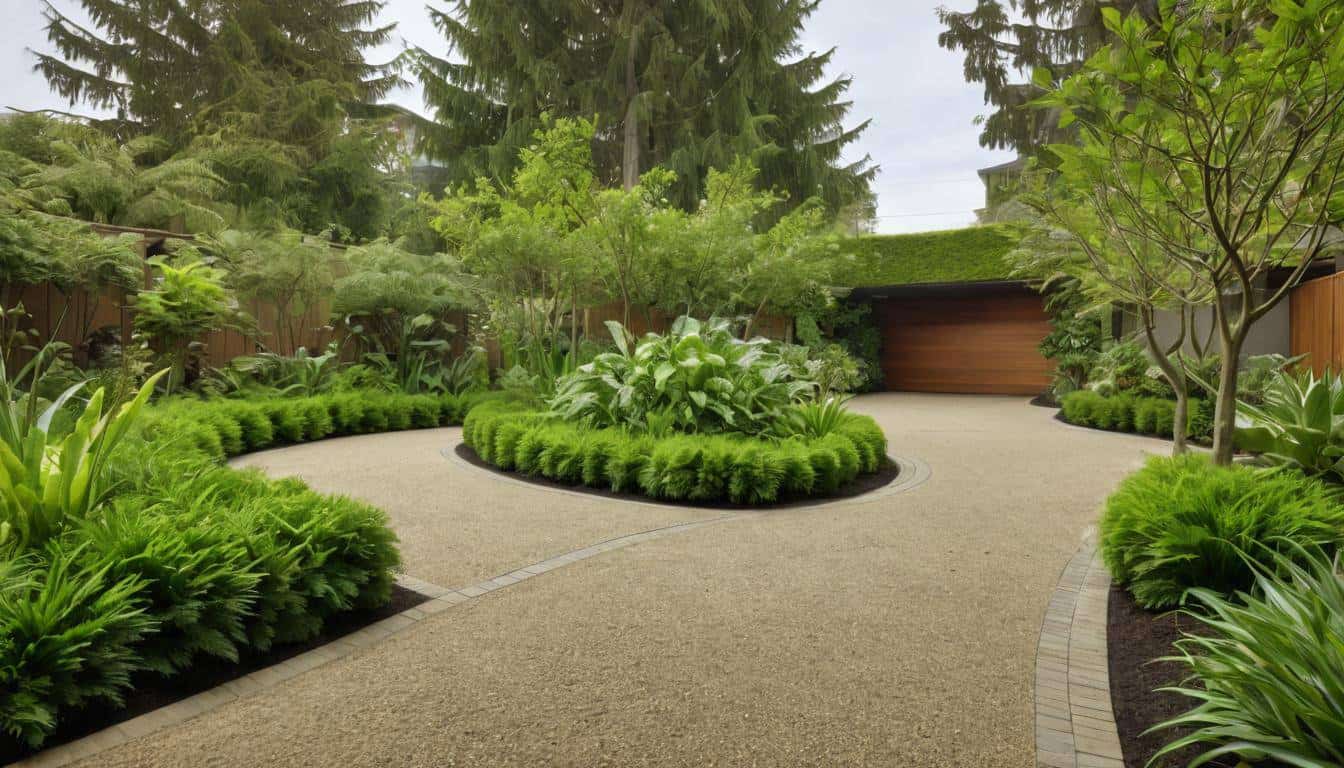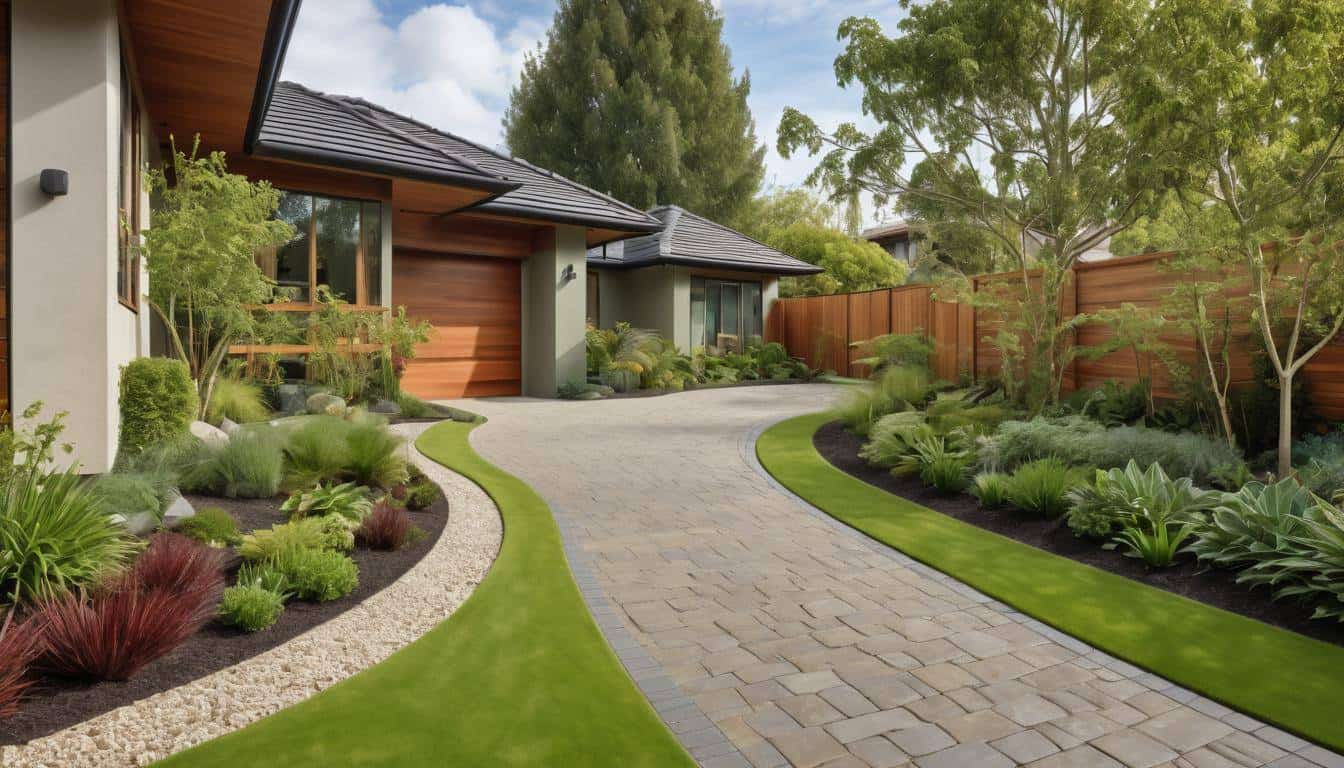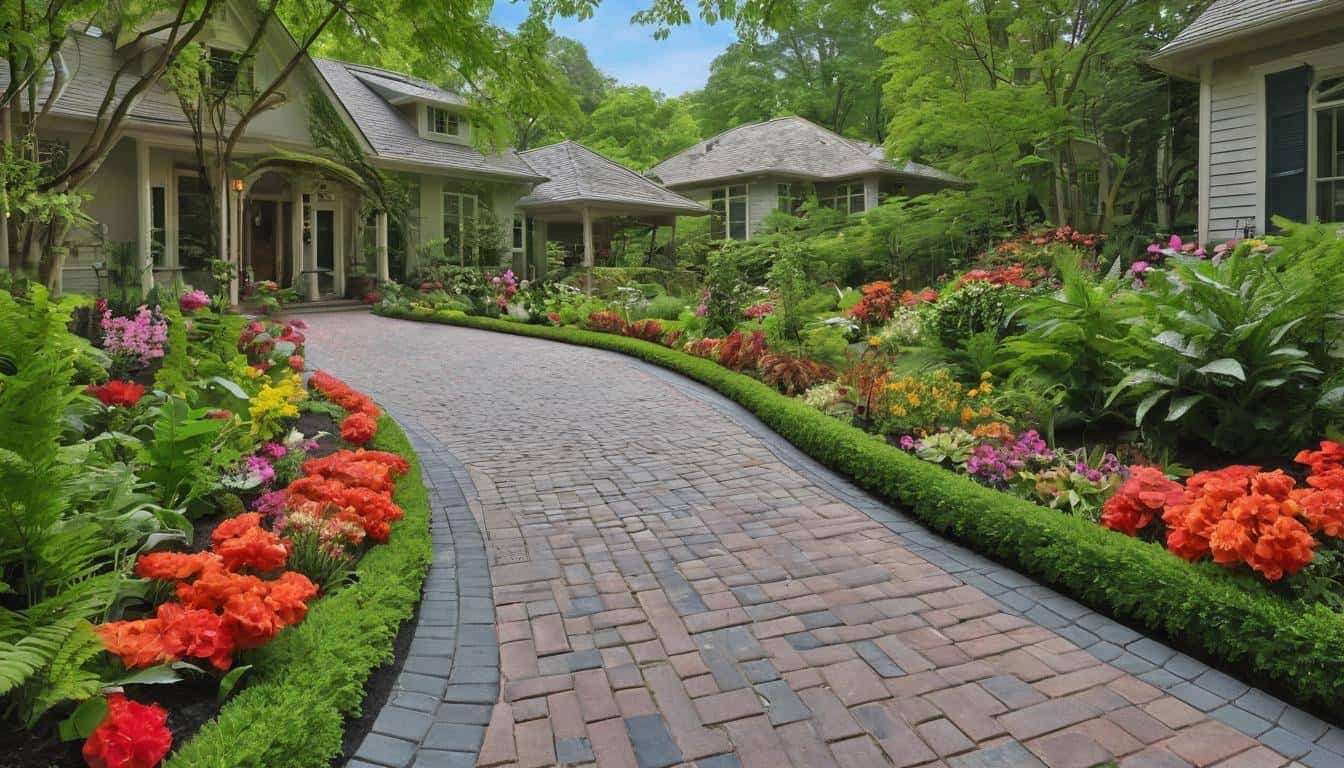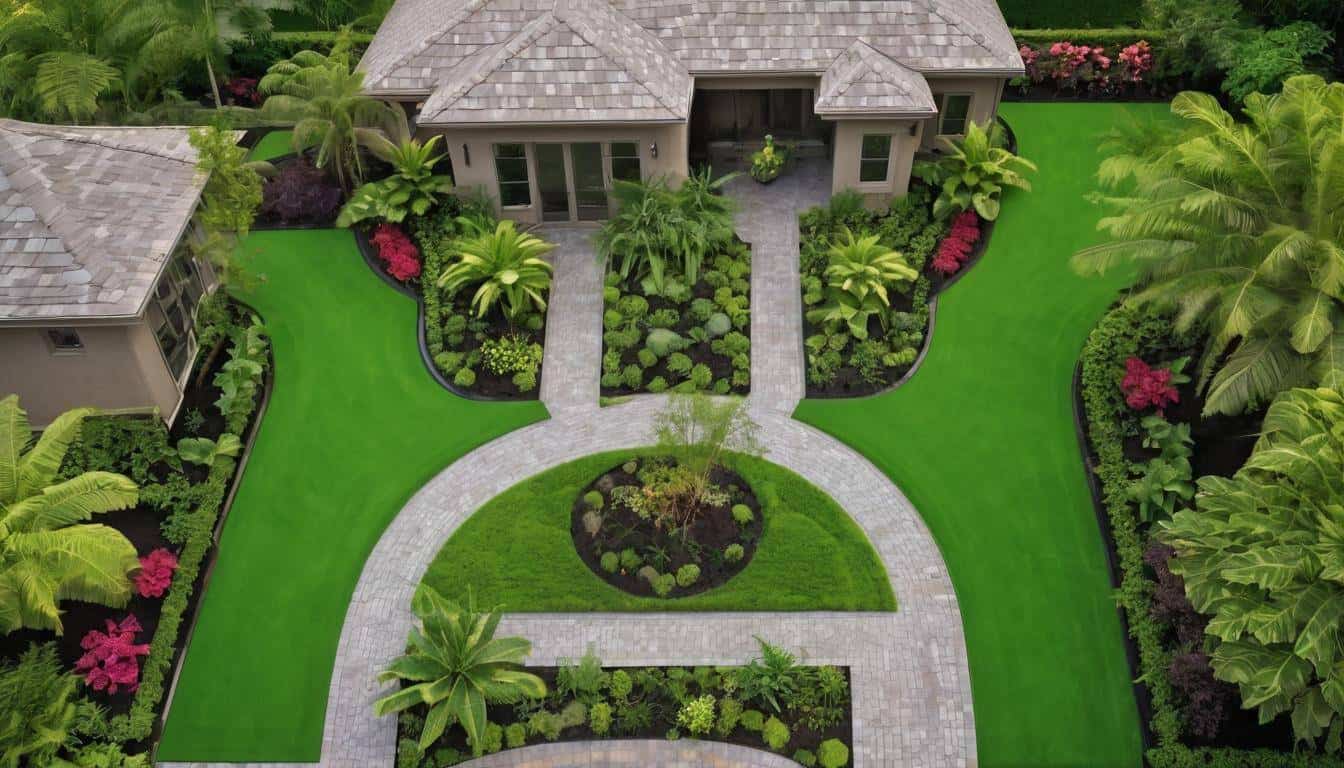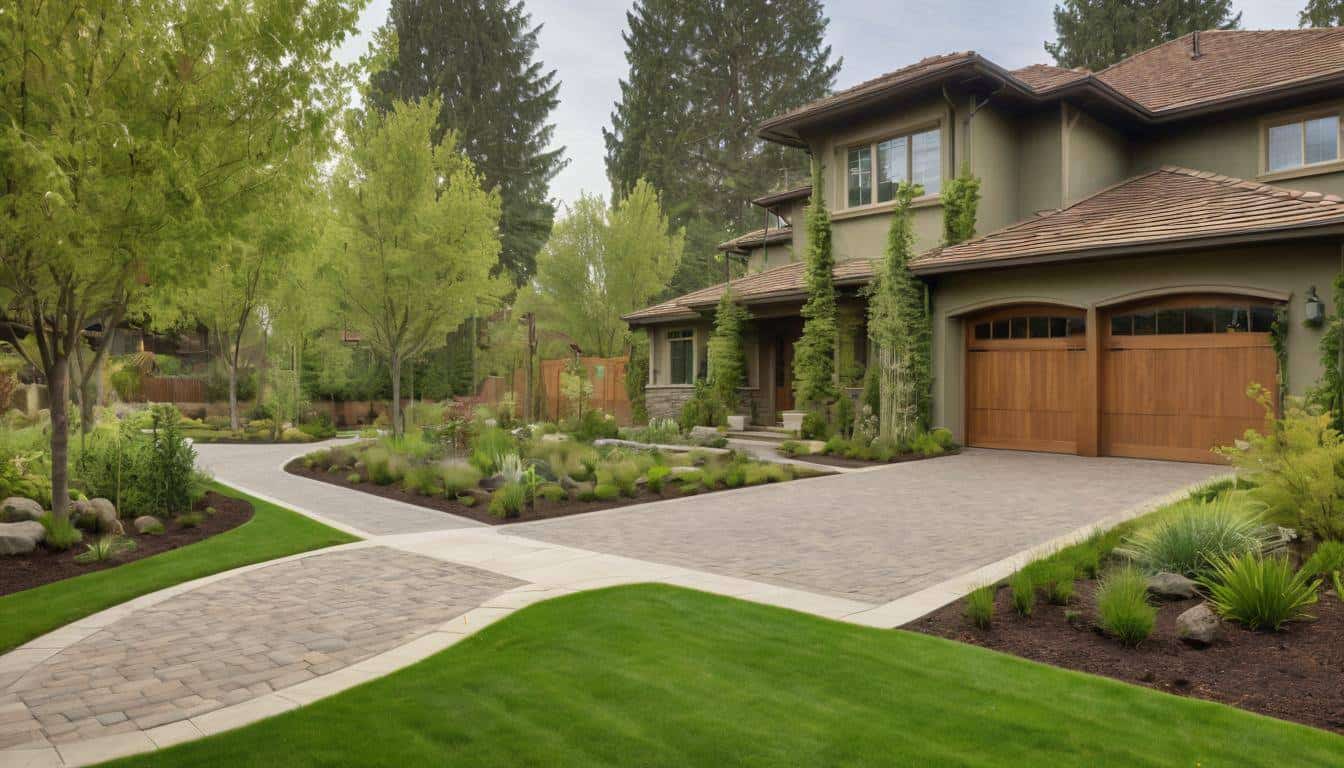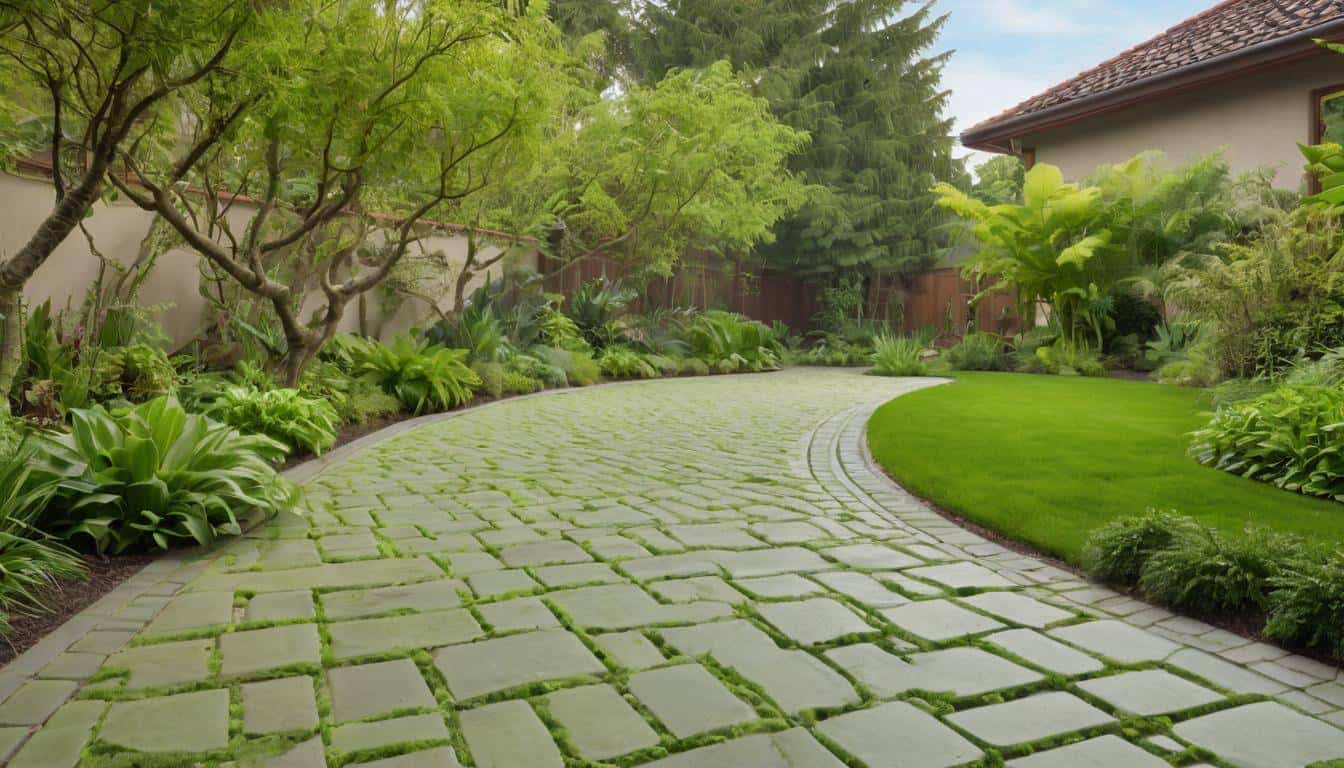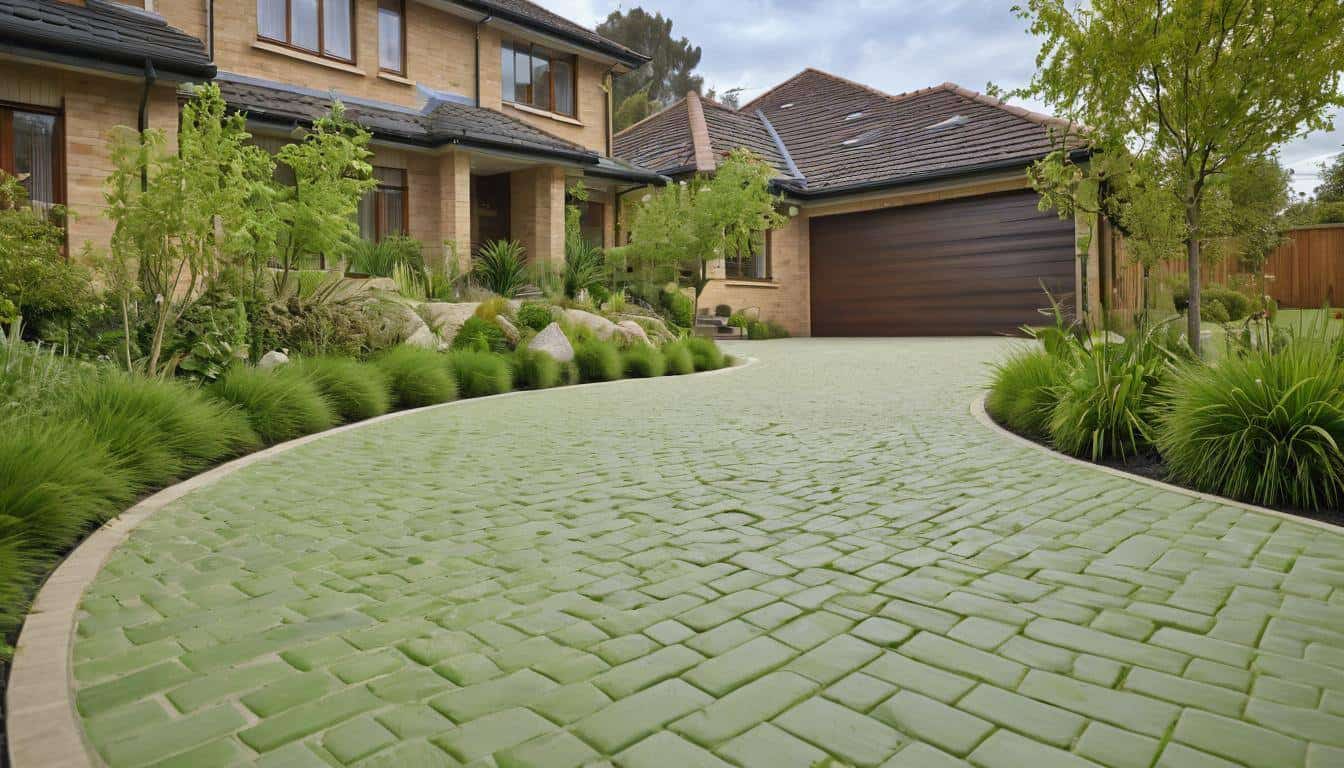Creating a beautiful green driveway is about more than just improving your home’s curb appeal—it’s an investment in our planet’s future. By choosing eco-friendly materials like permeable pavers or recycled products, you directly contribute to reducing stormwater runoff, preventing garden erosion, and even lowering surface temperatures around your house. According to the Environmental Protection Agency, using permeable materials can cool surfaces by up to 10 degrees Fahrenheit compared to regular asphalt.
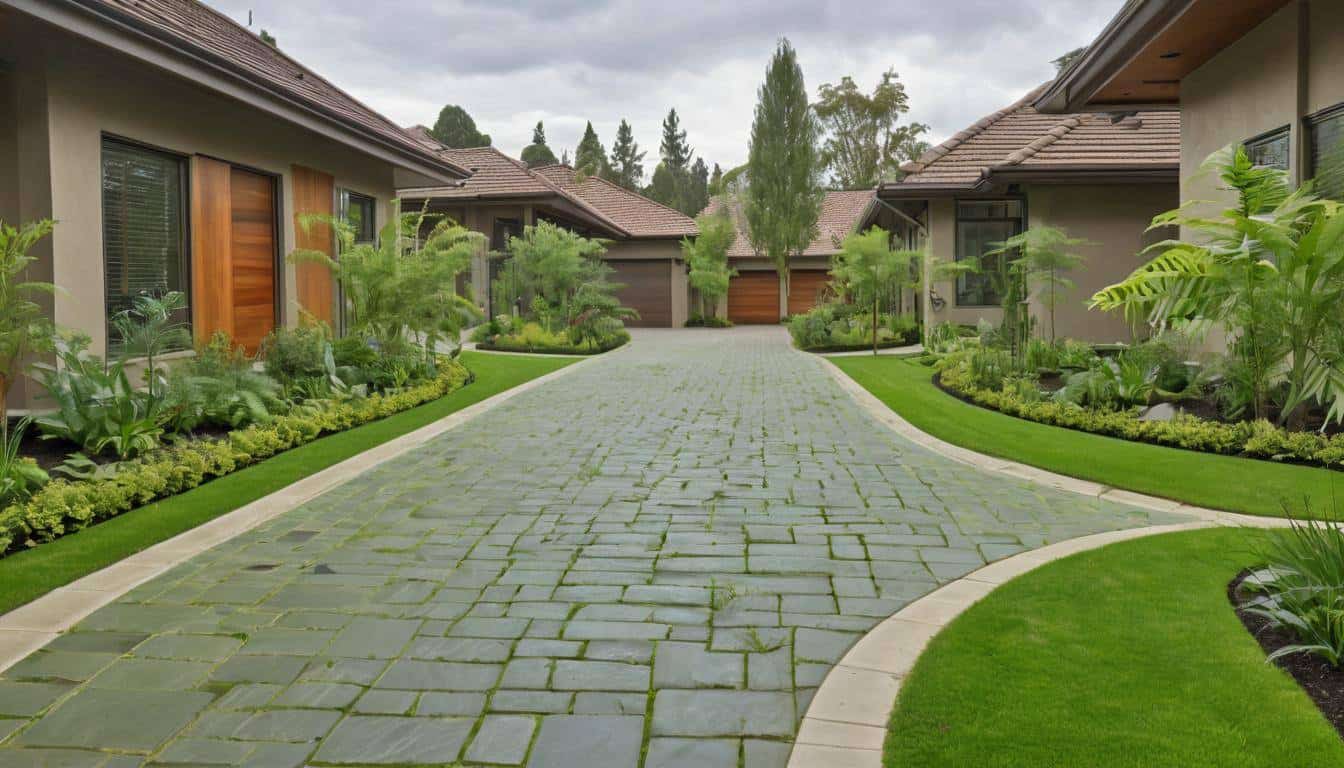
Moreover, this kind of sustainable landscaping can make your home cooler during those hot summer months. Imagine enjoying your lush, ecologically responsible driveway on a warm day, experiencing firsthand the blend of beauty and functionality. The knowledge gathered in compiling these ideas reflects our commitment to merging aesthetic value with sustainability seamlessly. Let’s dive into why investing time and effort into a green driveway is worthwhile and practical for you.
To create a visually stunning and eco-friendly green driveway, consider using permeable pavers or grass paving systems that allow for the growth of vegetation between the pavement. Additionally, incorporating natural elements like plants and trees alongside the driveway can enhance its beauty while reducing environmental impact.
Why a Beautiful Green Driveway is Right for You
Just picture pulling up to your home and being greeted by a luscious green driveway that not only looks stunning but also actively contributes to environmental sustainability. A beautiful green driveway achieves this harmonious blend of aesthetic appeal and ecological responsibility. It’s about creating a visually pleasing entrance and making a positive impact on your local environment.

The use of permeable materials in green driveways plays a significant role in reducing stormwater runoff. Instead of heavy rains causing flooding and water pollution, these permeable materials absorb and filter the water, preventing harmful pollutants from entering natural water sources. This simple yet impactful approach not only benefits your property but also helps in maintaining the overall health of the surrounding ecosystem.
During heavy rainfall, traditional impermeable driveways can result in dangerous pooling of water on roads, leading to hazardous driving conditions and potential property damage. By contrast, permeable surfaces minimize these risks by allowing water to pass through—reducing runoff and contributing to a greener environment.
Moreover, the environmental benefits extend beyond water management. Green driveways possess the ability to lower the heat island effect, especially during scorching summer months. The heat island effect refers to urban and suburban areas that are significantly warmer than their rural surroundings due to human activities. An EPA study found that permeable pavement can reduce surface temperatures by up to 10 degrees Fahrenheit compared to traditional asphalt, making your home cooler and more comfortable, while also mitigating the urban heat island effect.
In addition to functionality and environmental advantages, a green driveway goes beyond its eco-friendly features—it adds an exquisite touch to your property, distinguishing it from others in your neighborhood.
A beautiful green driveway is more than just an environmentally conscious choice; it’s a statement—a statement that marries responsible living with elegance. Now, let’s take a closer look at the sustainable and visually appealing materials that can transform your driveway into a work of art.
Sustainable and Aesthetic Materials
When creating a beautiful green driveway, the materials you choose significantly impact both the visual appeal and the eco-friendly impact of your project. Let’s explore some of the most sustainable and aesthetically pleasing options available.
Permeable Concrete Pavers
An attractive option for an eco-friendly driveway is permeable concrete pavers such as Eco-Stone or Eco-Priora. These specially designed pavers allow water to filter through the surface, reducing runoff and enabling rainwater to replenish groundwater. The permeability of these pavers helps to mitigate flooding and erosion, making them an environmentally conscious choice. They not only contribute to groundwater replenishment but also enhance the overall look of your driveway with their neat and uniform appearance.
Gravel and Stabilizer Grids
Gravel driveways have long been a popular choice for their natural look, excellent permeability, and eco-friendly qualities. By using products like EZ Roll Gravel Pavers, you can create a stable surface that prevents erosion while preserving permeability. Stabilizer grids provide additional support, ensuring that the gravel remains in place even under heavy traffic. This innovative solution combines sustainability with durability, offering an environmentally friendly option that maintains its aesthetic appeal over time.
Recycled Materials
Opting for recycled and locally sourced materials is not only an environmentally responsible choice but also contributes to the unique character of your driveway. You reduce waste and minimize the carbon footprint associated with transportation by using recycled materials in your driveway construction, including reclaimed stone, crushed concrete, or recycled asphalt. These materials offer durability and visual interest while promoting sustainability through resource conservation.
In addition to their environmental benefits, using recycled materials can also add a distinctive touch to your driveway. Each piece carries its own history, blending seamlessly into your landscaping design while reducing the need for new raw materials. The use of recycled materials reflects a commitment to sustainability and serves as a statement of environmental stewardship, aligning with the values of homeowners who prioritize eco-friendly landscaping practices.
By incorporating these sustainable and aesthetic materials into your green driveway design, you harmonize beauty with environmental responsibility. The visual appeal of your driveway will be enhanced by the varied colors and textures of these materials while contributing to sustainable land use practices that benefit both your property and the broader ecosystem.
Some may argue that sustainable materials are more expensive than traditional options. However, it’s important to consider the long-term benefits and cost savings associated with eco-friendly choices. While there may be a slightly higher initial investment, the durability and low maintenance requirements of sustainable materials often result in reduced long-term costs.
Choosing sustainable and aesthetic materials for your green driveway not only elevates its visual allure but also demonstrates a commitment to environmentally responsible landscaping.
Step-by-Step Design Guide
Creating an eco-friendly driveway is not just about sustainability but also about design and functionality. Let’s break it down step by step.
Step I: Planning and Permits
The first thing to do is to check local zoning laws and obtain any necessary permits. Different areas have varying rules about driveway materials and installation. After that, sketch out your driveway design, considering water flow on your property and planning for proper drainage to prevent water from pooling, especially during heavy rains.
Step II: Excavation
Now, roll up your sleeves and get digging! Remove the existing material from your driveway to a depth of at least 10 inches to provide a solid foundation for your new eco-friendly driveway. A good foundation ensures long-lasting durability without cracking or shifting.
Step III: Base Layer Installation
After clearing the space, lay down a geotextile fabric over the excavated area to prevent weed growth. Add a few inches of coarse gravel on top of the fabric, compacting each layer thoroughly to create a solid base for your driveway. Proper compaction prevents settling and shifting in the future.
Step IV: Laying Pavers or Gravel
Now, it’s time to install your permeable pavers or stabilized gravel according to the manufacturer’s instructions. The installation process will vary depending on the material, so be sure to follow the provided guidelines.
Step V: Filling Gaps and Final Touches
To finish, fill the gaps between your permeable pavers with small aggregate or sand. This not only gives your driveway a finished look but also helps lock everything in place. Finally, give your eco-friendly masterpiece a gentle wash to set the materials in place.
By following these steps carefully, you can ensure that your eco-friendly driveway not only looks stunning but also functions efficiently while minimizing its impact on the environment.
Mastering the creation of a green driveway is a rewarding venture, but maintaining its allure and eco-conscious nature is equally important. Now let’s shift our focus to uncovering essential maintenance tips for preserving the beauty and functionality of an eco-friendly driveway.
Eco-Friendly Maintenance Tips
Maintaining a green driveway goes beyond just creating it. Ensuring its longevity and eco-friendliness calls for consistent care and attention to detail. Let’s dive into a few essential maintenance tips that will help you preserve the sustainability and beauty of your eco-friendly driveway.
Regular Sweeping
Keeping your driveway free from debris is vital to maintaining its permeability. By conducting regular sweeping, you can prevent debris from clogging the permeable surfaces, which play a crucial role in natural water drainage and preservation. It’s like maintaining a clean path for nature to work its magic, allowing rainwater to effortlessly seep into the soil, replenishing groundwater sources and preventing erosion.
Preventing clogging ensures that your eco-friendly driveway can effectively manage surface water runoff without creating pooling or flooding issues. This contributes to reducing the strain on stormwater systems and helps safeguard water quality by preventing pollutants from being carried into local water bodies.
Weed Control
Weed management is an important aspect of maintaining your green driveway without compromising its environmental benefits. Opt for organic weed killers or consider using a vinegar-water solution to keep unwanted plant growth between pavers at bay without causing harm to the surrounding ecosystem.
By choosing natural weed control methods, you avoid introducing harmful chemicals into the environment, preserving the natural ecosystem while still ensuring that your driveway remains aesthetically pleasing.
Annual Inspection
Conducting an annual inspection is key to identifying any issues that might compromise the integrity of your green driveway. Check for settling or any signs of damage, such as cracks or uneven surfaces. Prompt repairs are essential to maintaining the functionality and appearance of your eco-friendly driveway.
Annual inspections allow you to identify potential problems early on, giving you the opportunity to take corrective action before they become significant concerns that could require more extensive repairs. Proactive maintenance not only preserves the aesthetic appeal of your green driveway but also supports its eco-friendly functionality by preventing structural issues that could impact its permeability and drainage capabilities.
With these eco-friendly maintenance tips at your disposal, you can ensure that your green driveway not only continues to function optimally but also maintains its visual appeal while minimizing its environmental impact.
Now, let’s turn our attention to strategies for reducing erosion and minimizing ground impact as we dive further into sustainable landscaping practices.
Reducing Erosion and Ground Impact
When crafting a green driveway, a primary objective is to reduce erosion and minimize ground impact. Erosion can result from water runoff and vehicle use, leading to soil displacement and compromising the driveway’s surface integrity.
To effectively combat erosion, substantial ground coverage and stabilized surfaces are crucial. Incorporating materials like geogrids during construction provides structural support and reinforcement, preventing soil displacement. Additionally, installing erosion control blankets made from organic or synthetic materials covers the soil’s surface, reducing water runoff and preventing soil loss.
The USDA Natural Resources Conservation Service reports that well-implemented erosion control measures can reduce soil erosion by over 50%, actively maintaining the stability of the driveway’s surroundings and preventing sediment buildup.
Proper grading is also essential in minimizing erosion and ground impact. Ensuring that the ground around the driveway slopes away from the surface prevents water from pooling and causing potential damage. Efficient grading permits proper drainage, directing water away from the driveway to minimize erosion.
Incorporating edging materials such as concrete curbs or pavers contributes significantly to preserving the driveway surface integrity over time. These materials provide a barrier against soil displacement and excess water runoff, thus reducing erosion.
Equipping your green driveway with effective erosion control measures enhances its sustainability and minimizes environmental impact. Through the integration of appropriate materials and adherence to proper installation techniques, significant reductions in erosion can be achieved, ensuring the long-term integrity of your driveway.
As we consider the significance of natural elements in green driveways, let’s explore how incorporating plants and other natural features can elevate both aesthetics and functionality.
Incorporating Plants and Natural Elements
When it comes to creating a green driveway, integrating plants and natural elements can significantly enhance the overall look and eco-friendliness of the space. These elements contribute to the aesthetic appeal while also playing a vital role in promoting biodiversity, reducing water runoff, and mitigating the heat island effect. Let’s explore some key strategies for incorporating these elements.
Grass Pavers
Grass pavers, such as Grasscrete, offer an innovative way to seamlessly blend hardscape with greenery. These specialized pavers allow grass to grow within their structure, creating a harmonious integration of natural elements with the driveway. The permeable nature of grass pavers promotes water infiltration, reducing stormwater runoff and enhancing the ecological value of the driveway.
By opting for grass pavers, you’re not just bringing in a touch of greenery but also actively contributing to environmental conservation by minimizing the adverse effects of impervious surfaces.
Native Plants and Shrubs
Introducing native plant species along the edges of your driveway can make a significant difference. Native plants are well-adapted to the local climate and soil conditions, requiring less water and maintenance compared to non-native varieties. Additionally, these plants attract local wildlife, fostering a balanced ecosystem while adding a distinctive natural charm to your driveway.
For instance, incorporating native wildflowers or low-maintenance shrubs not only conserves water but also provides food and habitat for butterflies, bees, and birds—enriching the ecological tapestry around your home.
Decorative Stones
Another impactful way to infuse natural elements is through the strategic use of decorative stones or mulch along the periphery of your driveway. By incorporating these elements, you create visually pleasing transitions between the driveway and its surrounding landscape. Furthermore, it ensures continuity in design while offering functional benefits such as erosion control and weed suppression.
The integration of natural stones or mulch not only adds texture and depth to your driveway landscaping but also fosters a cohesive connection with nature—a hallmark of eco-friendly design.
Embracing plants and natural elements within your driveway design isn’t just about creating a beautiful outdoor space; it’s about fostering sustainability, promoting biodiversity, and contributing to a greener environment. By incorporating these elements, you’re not only enhancing the aesthetics but actively nurturing an ecosystem that thrives in harmony with nature.
Incorporating these eco-friendly landscaping ideas into your driveway doesn’t just create a beautiful exterior—it also leads to sustainable practices that benefit both the environment and your own eco-conscious lifestyle.

